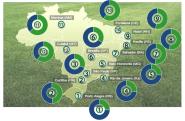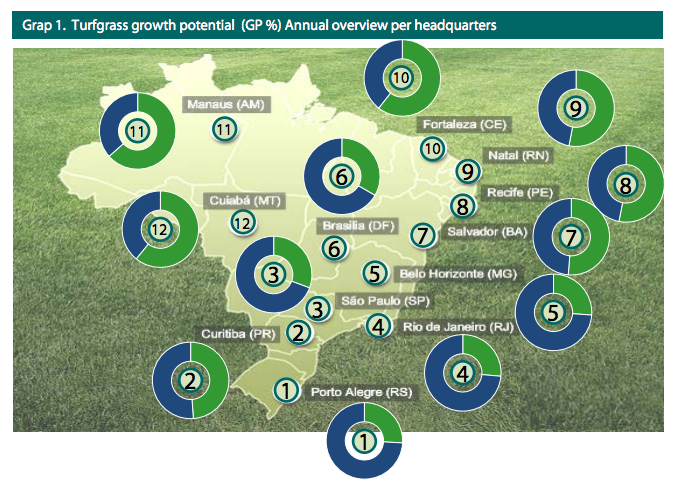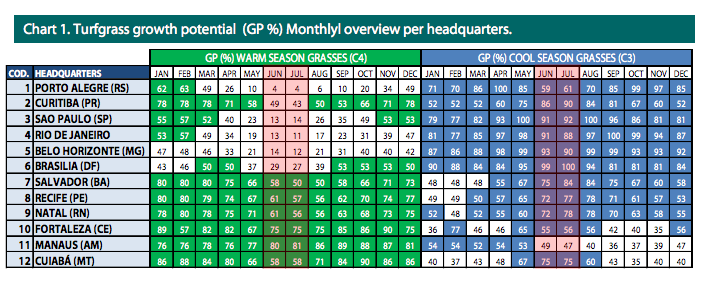Source:
Technical igK Dpt.
7 July 2014
Analyzing the turfgrass of soccer fields in the Brazil 2014 World Cup with igreenkeeping.com
The quality of field of Brazilian headquarters is one of the major concerns of coaches, players and fans. Through igreenkeeping and IGK Tool, we can come to know the keys from an agricultural point of view.
 Analyzing the turfgrass of soccer fields in de Brazil World Cup.
Analyzing the turfgrass of soccer fields in de Brazil World Cup.
Having analyzed the 12 locations chosen to host this Brazil 2014 World Cup , we've obtained a sectoral graphics based on the growth potential rate generated through igK Tool, that show the dominance of cool season (C3-blue) compared to warm season turfgrasses (C4-green) or vice versa, throughout the year. We obtain the most likely behavior of different types of turfgrasses, through the average temperatures in a time series sufficiently representative.


Conclusions:
From the data and charts generated from the different World Cup headquarters we could determine that:
- Headquarters 1, 3, 4, 5 and 6 are essentially cool season grasses. At the time in which is celebrating the World Cup, outlined in red (June and July), we can see that the Cool season growth potential rate (C3-blue) is significantly higher than warm season grasses (C4-green). These would correspond to turfgrasses such as lolium, fescues and poas. Species that give the game a fast paced, lighter and more suited to the technical teams.
- Headquarters 2, 7, 8 and 9 are clearly transition zone. Basically they are warm season grasses (bermuda, zoysia and paspalum), but which can be overseeded in winter with cool season grasses . If it has not been such overseeding, the warm season grasses can show a more or less brown color, being the limit of its dormancy, with a potential growth rate of around 50%, as a result of chlorophyll natural loss. Although it depends on the level of overseeding, these would correspond generally to something harder fields and more wear and traction for players.
- Headquarters 10 and 11 are warm season grasses predominantly (C4-green). We can see that their growth potential is better than cool season grasses throughout the year. The 12 still being a warm season area (C4), but it could be overseeded as if transition zone, because of the World Cup high quality requirements in June and July. These three headquarters would correspond to bermuda, zoysia and paspalum fields. Turfgrasses which give the game a slow pace, more traction and more in line with more physical power teams. This, coupled with the higher relative humidity in these areas makes athletic endurance takes a greater role in the game.